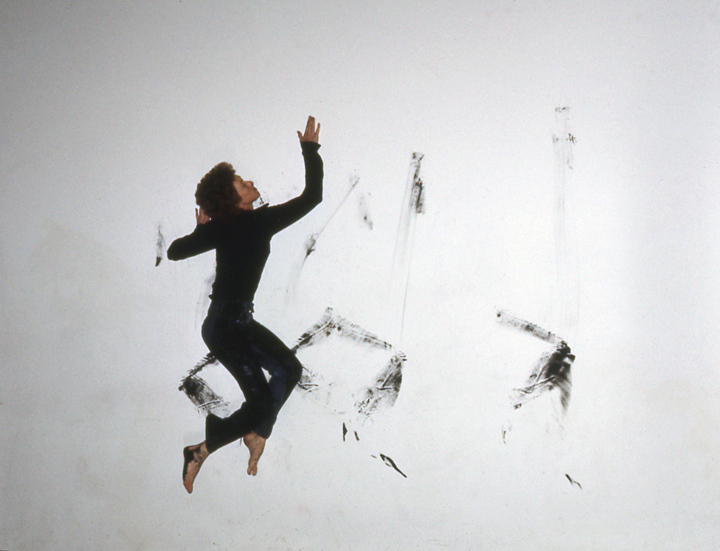One Woman Shows (1975)
This month long installation in Grandview Gallery, a woman’s cooperative gallery in the Los Angeles Woman’s Building, was an ironic reference to a one-person show. It was a “performance structure” (emphasis on construction—place, time, participants, activity—rather than on presentation quality) for women’s acts of self-naming, a portrait of a community. One month before the installation, a temporary “community” of performers was developed by word of mouth, chain letter fashion. Lacy chose three women for whom she would perform. They each chose three, who each chose three, etc. Each performer would participate as both chosen audience for one performance, and as performer for her own chosen audience. The subject of performances would be an “act of self-naming” that would leave a trace on the walls of Grandview Gallery when finally performed.
The opening of the installation was a performance with those women brought into the process so far. An audience watched from a roped-off space at the rear of the gallery. The participants selected to that time sat in front of the audience facing Lacy as she began the first piece, naming herself as the woman who is raped—reading rape reports from that day, gathered from the Los Angeles Police Department; the woman who is a whore—taking blood out of her arm, injecting it into a grapefruit, and slamming her paint soaked body and the grapefruit against the wall, and the woman who loves women—inviting the next three women to perform.
These three moved to different places in the gallery, bringing with them their own invited audience, and simultaneously began performing. From one dramatic moment the activity mushroomed into three actions, and then nine, and so on. As the loss of boundaries between individual works intensified, the watching audience traveled from witness to a performance to witness to a community in process.
The performance continued throughout the month, with each performer entering the gallery at a time of her own choosing, doing her performance before her own selected audience, and leaving traces on the gallery wall.
